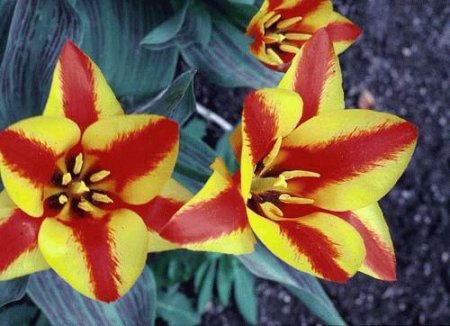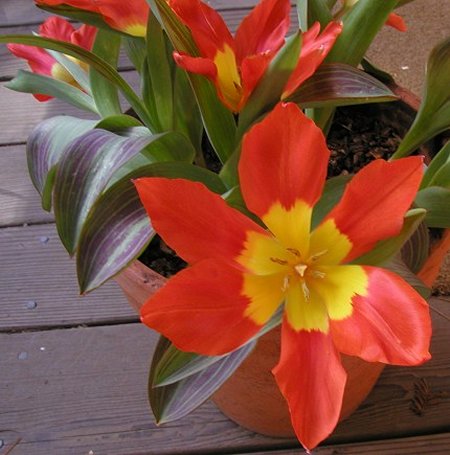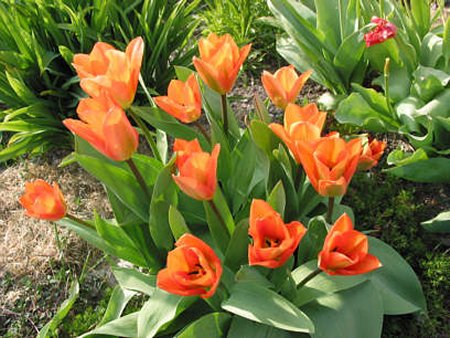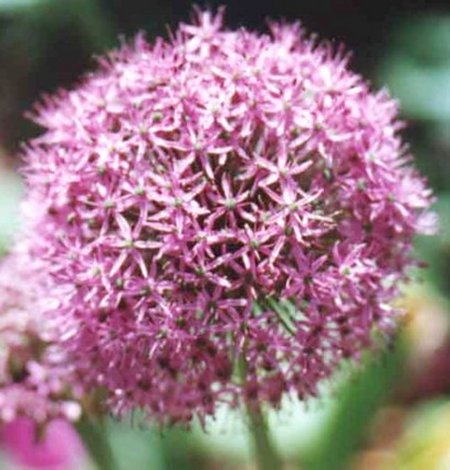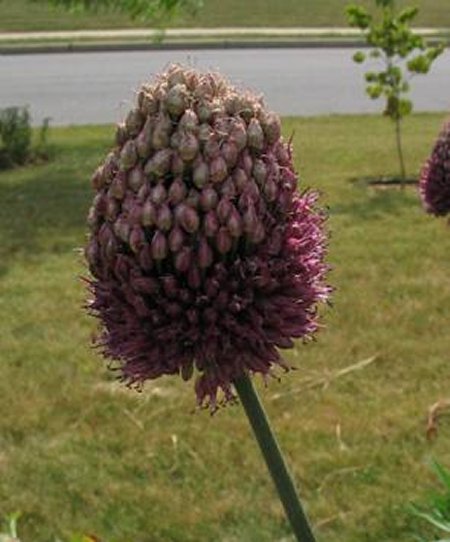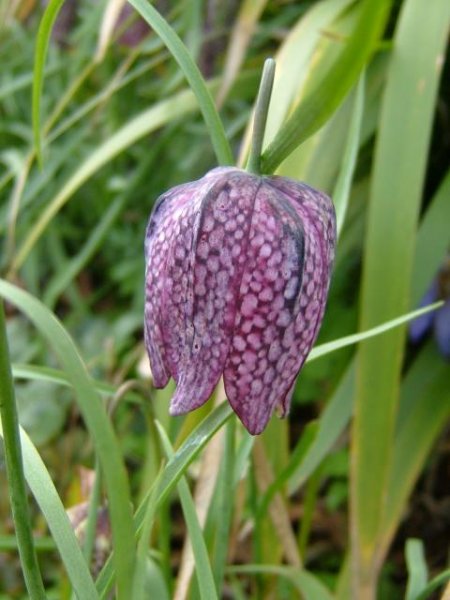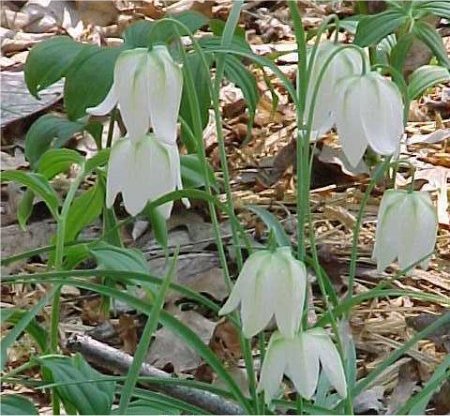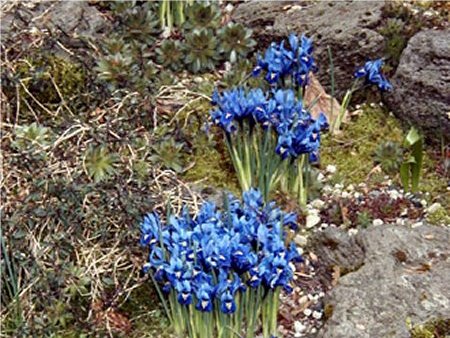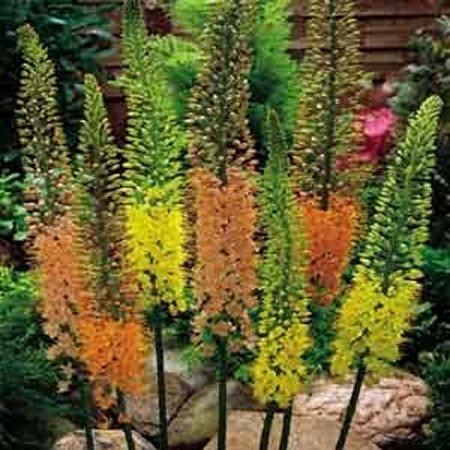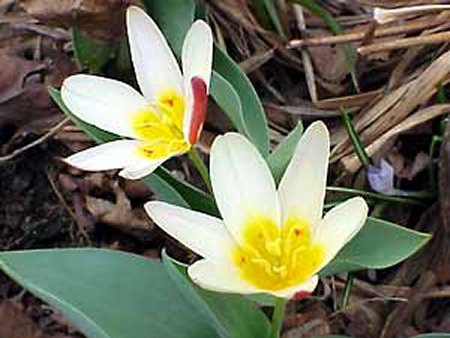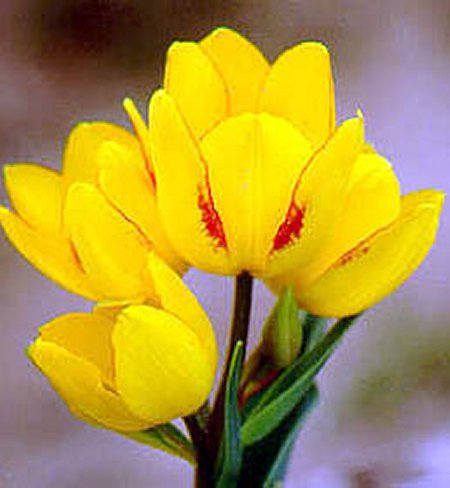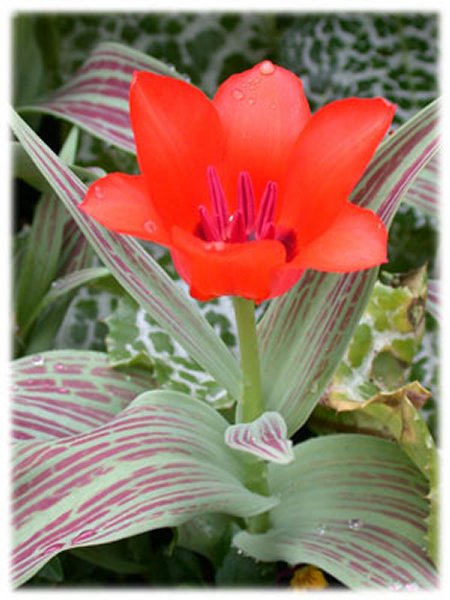
2005 Year in Review
Back to Page two: Other Listing | Back to Year in Review Index
Minor Bulbs |
|
Source: Greg Stack, Extension Educator, Horticulture, gstack@uiuc.edu Most gardeners will busy themselves in the fall preparing for spring color by thinking about spring flowering bulbs, but what about adding unusual flowers and different colors to the garden by using what are often referred to as minor or miscellaneous bulbs, asked a University of Illinois Extension horticulture educator. "The minor bulbs comprise a whole group of bulbs that are often overlooked or at least not planted in great quantities, but can prove valuable from the standpoint of offering early color, unusual flowers, and the ability to be long-lived in the garden through naturalization or perennialization," said Greg Stack. "Many of these bulbs naturalize or perennialize well, which means that if given a good location and left undisturbed, they just get better with each passing year." Before deciding what minor bulbs to plant, it is important to look at bulb basics, he noted. "Heavy soils, either wet or dry, are not conducive to successful bulb gardening," Stack said. "It is worth the effort and expense to prepare the soil BEFORE planting bulbs. Work in large amounts of compost and spade it into the soil a minimum of 12 inches. It does no good to add amendments to the soil if it is above the level of the bulb's base where all the root action is located." Drainage is important for 99 percent of all bulbs, he added. "If you expect to see bulbs last for more than one season, good drainage is very critical, especially during the dormant season," said Stack. "That translates to the summer for spring-flowering bulbs and the winter for summer-flowering bulbs. "Tulips that are great perennializers include the Species, Greigii, and Fosteriana types. But even their useful garden life is cut short if they are planted underneath annuals that get regular watering during the summer." For some of the lesser-planted bulbs, gauging planting depth can be helpful. Plant all bulbs three times their height deep. That means look at the bulb's height in inches and multiply by three. That will give you the proper depth and planting distance apart. Those that want to venture from the ordinary or add a bit of difference to the garden might want to consider spring-flowering minor bulbs. "Well-supplied garden centers often carry a selection of minor bulbs," said Stack. "If you can't find them locally, there are several excellent mail order bulb suppliers that can get you started and satisfy your taste for the unusual." Stack said that the alliums or "flowering onions" are unique, exotic, and loads of fun. They can extend the bloom period well into June with flowers up to six inches in diameter. "Flowers often have the look of your favorite star-burst firework at the annual Fourth of July display," he said. "One of the better ones for naturalizing is Drumstick Allium--Allium sphaerocephalon. It has dark, crimson-purple, egg-shaped flowers that grow up to 24 inches tall. The low-growing foliage is often best hidden by other low growing perennials and allows the flowers to appear magically suspended above the garden. "All alliums prefer well-prepared, well-drained soil in a sunny location. The flowers are excellent fresh-cut or can be dried." A blast from the past is Fritillaria or Crown Imperial. "Fritillaria were a garden favorite dating back to the 1500s," he noted. "This show-stopper produces a 30-inch flower stem that sports a leafy, tufted crown of foliage with 10 or more bell-shaped flowers handing from below. Colors range in the oranges and yellows. It demands very good drainage in a site that is semi-shaded." The Checker Lily or Guinea Hen Flower is another Fritillaria that is sure to catch attention. It is a terrific naturalizer and is noted for its bell-shaped flowers that are shades of white or purple and spotted or checked much like a picnic table cover. At eight inches tall, it makes a great low-growing colorful display. "To be successful with Fritillaria, you need to understand the bulb," said Stack. "When you buy them, you will think you have purchased a well-aged cinnamon roll that has been sitting around a bit too long because of the rather malodorous scent--somewhat like a skunk. "When planting Fritillaria bulbs, fill the spaces between the rings with sand and plant them propped on their side. This will prevent water from pooling on the surface of the bulb and rotting it." Rock Garden Iris (Iris reticulate) are great bulbs for naturalizing in rock gardens or borders, quickly producing offsets that multiply into generous drifts of color. These four to six-inch tall flowers start blooming in April and have upright inner petals and downward outer petals showing off a contrasting color on the petal spine. Eremurus, also known as Desert Candles or Foxtail Lily, is a spectacular plant growing to three to four feet tall. The flower stems are covered for half their length in hundreds of small flowers from early May to June, opening from the bottom to the top and eventually giving the plant the look of a bottlebrush or foxtail. "They are extremely easy to grow, which should put them on the top of everyone's list," said Stack. "These bulbs prefer a sandy, well-drained soil that is in bright sun. Once planted, they like to remain undisturbed, making them good candidates for naturalization." For those who demand tulips in the spring, Stacks noted that some offer the ability to perennialize and become almost permanent features in the garden. "Kaufmanniana tulips, also known as water lily tulips, are colorful and are low-growing tulips perfect for border plantings," he said. "The large flowers are produced on short stems and, when fully open, resemble water lilies. Some varieties even have beautifully mottled foliage to go along with the flowers. These are great naturalizers when left undisturbed." Greigii tulips are desired for their exquisite foliage to which is mottled and streaked with purple stripes. These short tulips--10-12 inches--are good for the front of the border and will produce a colorful display of flowers that open and close in response to sunlight. "For late-flowering delight, consider the Multiflowering Tulips," said Stack. "These May bloomers produce a bunch--four to five--of full-sized flowers per stem. The blooms make a full garden display and make it pretty easy to pick a bunch of tulips for that special vase. "All of these examples only scratch the surface of what can be found under the miscellaneous or minor bulb category." by Editor, theCity1.com |
|
Copyright © 2005 TheCity1.com.
All rights reserved
